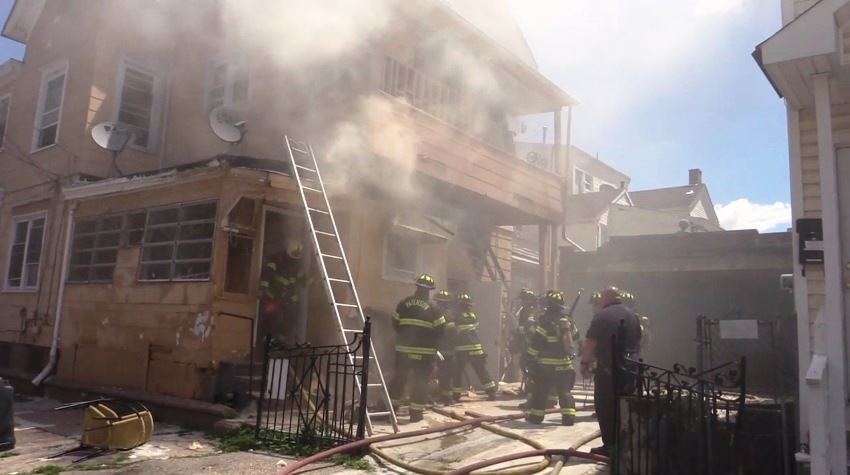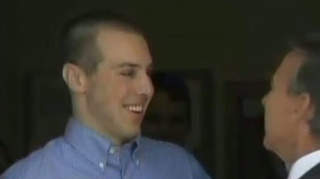Why did Metro wait 7 minutes to call for firefighters? Congress has a chance to find out on Friday
Watch DC City Council hearing from February 6
Read NTSB’s news recommendations on ventilation of smoke at tunnel incidents
Today (Wednesday) the National Transportation Safety Board (NTSB) added an important new bit of information to what we know about Metro’s handling of the January 12 deadly smoke incident at L’Enfant Plaza. In NTSB’s release of information about Metro’s poor use of ventilation fans during the incident, NTSB says Metro first learned there was smoke and a train in the Yellow Line tunnel near the L’Enfant Plaza Station at 3:15 p.m. We already know from DC officials that the first call from Metro’s Operations Contol Center (OCC) to the District’s 911 center was at 3:22 p.m. This confirms, that once again, Metro delayed many minutes before calling firefighters to the scene. Add this delay to the six minutes it then took the 911 center to dispatch firefighters. That’s approximately 13 minutes from the first report of smoke until firefighters get the call. Does anyone find that acceptable? (Click here to read the new information from NTSB.)
This delay in calling for firefighters has been a recurring theme at Metro emergencies through the years. It is one of a number of issues the DC City Council failed to address at a hearing on Friday attended by Metro and DC public safety officials. On Friday, Congress get its chance to question some of the same people. Let’s hope they do a better job.
The House Oversight and Government Reform Committee has scheduled a hearing with the title, “D.C. Metro: Is There a Safety Gap?” In my effort to try to make sure we don’t get another bunch of questions that miss their mark, let me offer a few suggestions for the members of the committee.
DC’s 911 CENTER
First of all let’s talk about the list of witnesses. These are the witnesses mentioned in an article by Roll Call:
Hearing witnesses include NTSB Chairman Christopher A. Hart; Mortimer L. Downey, chairman of the WMATA board of directors; Edward R. Mills, an assistant D.C. fire chief; and Jonathan Rogers, one of the passengers on the Yellow Line train.
It’s not mentioned here, but I certainly hope that Jennifer Greene is also on the list. Greene is the head of DC’s Office of Unified Communications (OUC or 911 Center).
At last Friday’s hearing in front of the DC City Council there was a lot of talk about the problems during the January 12 response that firefighters had when trying to use their radios inside the tunnels and stations. But not one member of the City Council asked the person in charge of that radio system anything about those problems. even though she was sitting right in front of them at the witness table. That person is Ms. Greene.

Could it be that no one on the City Council or their staff members knew that Greene is in charge of the radio system that failed? That would be a shame since Green said the radios were her responsibility during her introduction at the hearing (1:46 in the video). It was also the City Council that gave OUC that authority a little more than ten-years-ago. Here’s the operative part of the Code of the District of Columbia:
All of the authority, responsibilities, duties, and functions of the agencies’ call centers and radio technology shall be transferred from the agencies to the Office of Unified Communications within such reasonable period of time as the Mayor may designate. The transfer shall include all 911, 311, and 727-1000 call center authority, responsibilities, duties, functions, and infrastructure.
The other reason to question Greene is about the delay the 911 center caused in getting help to the passengers stranded in the smoke-filled tunnel. The 911 center initially took three separate calls for issues at three different locations. Workers at the 911 center mishandled each of those responses, mostly by delaying the dispatch. The call handling for each of these responses was many times longer than any reasonable standard. The following information comes from DC’s own preliminary report about the January 12 incident:
- At 3:14 p.m. an OUC supervisor received a call from Metro’s OCC for debris burning on the tracks inside the Gallery Place Metro Station. The call was not dispatched until 3:19 p.m. When it was dispatched, only a single engine was sent. Instead, that call should have received the full Metro box alarm assignment that includes multiple fire companies. Call handling time 5 minutes.
- At 3:18 p.m. a construction worker called 911 to report smoke coming from a vent shaft at 9th Street and Water Street, SW. That call wasn’t dispatched until 3:22 p.m. Call handling time 4 minutes.
- At 3:22 p.m. OCC again calls an OUC supervisor to report smoke at the L’Enfant Plaza Station. It took until 3:28 p.m. for OUC to dispatch the Metro box alarm assignment for L’Enfant Plaza. Call handling time 6 minutes.
(Note: The timeline provided only gives minutes and omits seconds. The actual time could be a bit longer or a bit shorter.)
Congress, don’t make the same mistake the DC City Council did. Question Jennifer Greene why the 911 call center in the Nation’s Capital takes so long to dispatch emergency calls. If it happened on January 12, I am sure it occurs regularly. Remember these are the true first responders in the event of any emergency, big or small. They need to do a much better job.
While you’re at it, ask Greene about the new poorly working tablets that OUC put into the field. This is where chiefs, firefighters, paramedics and EMTs get crucial information about the response. In last Friday’s hearing, union leaders for both fire and EMS, who rarely agree on anything, said this hardware is causing serious problems.
METRO
I expect WMATA’s Chairman Mortimer Downey will get much of the attention from the members of Congress, as well he should. We also know that he will be limited in what he can say about the January 12th incident because of the ongoing NTSB investigation. So, we may not be getting a lot of specifics. But here are questions that Downey should be able to answer that will shed light onto some of the problems that have been common on a number of Metro incidents:
- Does Metro have a policy to immediately contact area fire departments at the first report of smoke, fire, derailment, injury or a medical emergency? If not, why not? We now know Metro waited seven minutes after learning that a Yellow line train was in a smoke filled tunnel before calling for firefighters. This type of delay is not new territory for Metro. OCC has a habit of having Metro personnel investigate things first and calling for help much later. In a similar smoke filled tunnel/arcing third rail incident in April, 2000, Metro waited 15 minutes to contact DC’s 911 center (before there was an OUC). WMATA was blasted by then DC Fire Chief Tom Tippett for this irresponsible delay in calling for help. In the January, 2007 derailment at Mount Vernon Square that left many injured, there was a 12 minute delay. At an appearance before the Council of Governments today, Washington Post reporter Lori Aratani tweeted that Downey acknowledged Fairfax County Board of Supervisors Chairman Sharon Bulova’s concerns about this very issue.
- Why does Metro allow train operators to leave the train to put out fires? This is very much related to the previous question. In last Friday’s hearing, if I heard correctly, WMATA interim general manager Jack Requa twice mentioned incidents where train operators left their trains to use fire extinguishers. This is exactly what caused hundreds of passengers to become trapped in a smoke filled tunnel for many hours in 2000. Why hasn’t Metro learned this lesson?
- Does Metro train its operators and police officers to evacuate passengers from stranded trains when there is a known hazard such as smoke? The answer to that question, according to the Amalgamated Transit Union Local 689’s tweet to STATter911, is no. It makes no sense that passengers are forced to just sit there during a fire hoping help arrives in time. Clearly it didn’t come in time for Carol Glover. If the train can’t be moved out of the hazard zone, why not move the passengers? NTSB praised a Chicago Transit Authority worker in 2006 for doing just that after a fire occurred when his train derailed sparking a fire at the rear of the train. Read more here.
DC FIRE & EMS DEPARTMENT
Congress needs to truly understand the current state of the DC Fire & EMS Department and its readiness to respond after four years of neglect under the leadership of Mayor Vincent Gray, Deputy Mayor Paul Quander and Chief Kenneth Ellerbe. One of those areas of neglect became apparent Friday when WMATA issued a chart showing how few members of the DC Fire & EMS Department have been to Metro’s Landover training facility compared to other area fire departments. This is just one symptom of the failed leadership of the previous administration. If Congress asks the right questions they will learn of other symptoms that will impact response to Metro incidents and other large scale emergencies in the National Capital Region. Here should be areas of concern:
- Hiring of firefighters
- Hiring of firefighter/paramedics
- Purchasing fire trucks and ambulances
- Maintaining fire trucks and ambulances
- Rebuilding of the reserve fleet so it can be used by personnel called back to work during a crisis (this was put in place after 9/11 and then squandered because of the purchasing and maintenance issues)
- Keeping the public informed during an emergency
- Other training

JONATHAN ROGERS
My final note from is about Mr. Rogers. He was a one man news team during the Metro incident. With very limited information coming from the DC Fire & EMS Department and other agencies, Rogers let the world know what was going on from inside the smoke-filled Metro train. As a passenger, Rogers didn’t just send us pictures, video and details, he took action. Rogers was one of those who spent a long period of time trying to revive Carol Glover.
In addition to hearing his account of those terrifying moments, I hope the members of Congress thank Jonathan Rogers on behalf of all of us. While radios failed, 911 delayed sending help and Metro made many of the same mistakes they always seem to make, Jonathan Rogers and his fellow passengers went above and beyond. Despite choking on the same acrid smoke that killed Ms. Glover, these people made her a priority and are the real heroes of the day.






